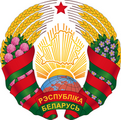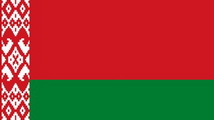History
The hospital was built at the expenses of the largest manufacturing enterprises of the city - Automobile Plant, Tractor Plant, Ball Bearing Plant.
On October 28, 1978 the hospital admitted its first patients. Initially it was established as a united medical institution with a polyclinic and a hospital in its structure. The polyclinic was a large department able to provide sufficient outpatient care to children. Its district service (21 districts) was united into two pediatric departments. District doctors together with medical specialists (10 specialties) provided full medical support of the development of the children served. There were necessary supportive rooms, healthy childhood departments, dental departments, a day patient helminthology department.
V.A. Poradovskaya, a district pediatrician of Zavodskoy District at that time and later the first Head Doctor, has made a substantial contribution to the building of the hospital and forming of the staff.
Much attention was paid to the prevention work. V.A. Poradovskaya became a Head of the Committee for the Prevention of Child Mortality, organized school and preschool departments at polyclinics. She was awarded the Badge of Honor Order, Medal of Pirogov, diplomas for her activity. The hospital was awarded the Red Challenge Banner and First Place Diplomas of the Ministry of Health of the USSR and Central Committee of Labor Unions of Medical Workers at that time.
During her work as a Head Doctor of the 4-th Children’s Clinical Hospital from October 1978 to 1987 the hospital was a winner of the Union competition multiple times, was awarded the Republican Red Challenge Banner.
Other changes in the hospital structure:
- In 1984 the Department of the second stage of developmental care for premature newborns was transferred to the 7-th Clinical Hospital. The Dental Surgery Department was opened at the hospital the same year.
- 01.01.1990 - the decision to separate the polyclinic as an independent medical institution was taken.
- In 1995 the Second Infectious Diseases Department for Newborns was closed. In 2005 the Infectious Diseases beds were transferred to the Children’s Infectious Diseases Clinical Hospital.
- V.N. Strugach became a Head of the hospital from 1997.
- From 1998 to 2009 G.V. Dudareva was a Head of the Hospital,
- From 2009 till present – R.M. Filonovich
At present departments of the Hospital are as follows: Admission Department with Information Desk, Allergology Department, Gastroenterology Department, Rheumatology Department, Physiotherapy Department, Pediatric Department, Ophthalmology Department, Surgery, Dental Surgery Department (Dental), Anaesthesiology and Reanimation Department with reanimations with intensive care units, Physiotherapeutic Department, Radiology Department, Clinico-Diagnostic Department, Central Sterile Stores Department. There are the following rooms in the Clinico-Diagnostic Department: otolaryngologist’s, gastroenterologist’s, neurologist’s, functional diagnostics, endoscopy room, psychotherapist’s. There are also a Consultative and Diagnostic Center which provides services for Zavodskoy District patients. The Department is responsible for the health of children of the city taking into account bedspace profile.
Hospital’s capacity is 305 beds. Medical stuff consists of: doctors – 78, paramedical staff and nurses– 158 persons. 76% of the doctors and 83,4 % of the paramedical staff have qualification grades.
The hospital is a multi-field medical institution which provides qualified and specialized medical help to people of the Republic of Belarus and Minsk. There are Republican Ophthalmology and Allergology Centers at the Hospital and the following chairs:
- Chair of Propedeutics of Children’s Diseases of the Belarussian State Medical University;
- Chair of Pediatrics of the Belarusian Medical Academy of Post-Graduate Education;
- Chair of Children’s Dentistry of the Belarussian State Medical University;
- Chair of Ophthalmology of the Belarussian State Medical University.
The Hospital conducts activities in the following fields: allergology and immunology, gastroenterology, immunoprophylaxis, cardiology, laser surgery, ophthalmology, pediatrics, ocular prosthetics, rheumatology, tissue and organs transplantation, psychiatry, critical care medicine, dental surgery, cardiac pacing, endoscopic diagnostics and others.
Further widening of possibilities of the hospital is planed to be fulfilled through modernization of hospital’s buildings, putting into practice latest achievements of medical science, improving all aspects of treatment and diagnostics.













